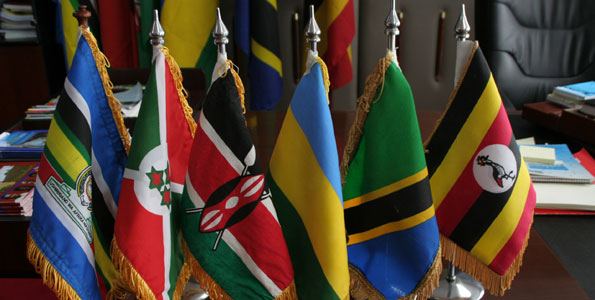East Africa (Kenya, Uganda, Tanzania, Rwanda and Burundi) is attracting the attention of the world due to the immense potential that the region holds. The Africa rising story cannot be told without emphasis on East Africa’s importance. The region has produced some of the world’s fastest growing economies. The region has in the recent past, made tremendous progress under key development indicators.
East Africa and Kenya in particular has one of the most educated and skilled work force in Africa. Investors that set up here are guaranteed access to the people they need across a broad spectrum of industries.
The 5 countries in the region offer a market of over 145 million people. The region also has a growing middle class which stands for 22.6% of the population. The population’s median age 19. With such a young population, the region is ripe with promise for those who need to access labor, a market with disposable income and tech savvy at that.
Efforts to improve governance in East Africa are ongoing and the governments have made progress on this. In Kenya, the government has effected a raft of measures to fight corruption and improve service delivery e.g. implementing the iTax and IFMIS system as well as commissioning Huduma Centres. Tanzania is also making headlines in conducting free and fair elections. Tanzania has also moved up the rankings in the ease of doing business in the region.
Regional integration is now seen as necessary and dare I say, inevitable. There exists a customs union that has been in place since 2005. In 2010, EAC member states dropped all internal trade tariffs. The EAC member states also adopted a single customs clearance treaty to clear goods at one point at their borders/points of entry. It is expected that integration efforts will be strengthened going forward. Private sector has been supportive in this as the cost of phone calls between EAC member states has gone down under the One Network Area Initiative adopted by EAC member states.
Economically, the region is on a steady growth path. According to the EU commission, GDP Growth in EA stood at 6.5% in 2014. The 2015 projection was 6.8% which it failed to reach only because of civil unrest in Burundi.
The region is dedicated to development of infrastructure. EAC member states agreed to work on joint roads, rail and pipeline projects in across their borders through the Standard Gauge Railway (SGR) and Lamu Port and Southern Sudan Ethiopia Transport (LAPSSET) projects.
Foreign Direct Investment (FDI) flows are reaching record levels in the region riding on the need by foreign investors to tap into the region’s growth potential. East Africa currently holds higher return on investment than the most developed economies of the world.
In Kenya, the government has identified opportunities that investors can tap into that are in tune with Kenya’s Vision 2030 i.e. to become a middle income economy by 2030. The government has begun working with private investors in pursuing these opportunities through Public Private Partnerships orthe private sector on its own. Below are examples of investment opportunities that fall under this arrangement. The projects are currently being promoted by the Kenya Investment Authority:
Energy & Petroleum Sector
Kenya aims to have diverse sources of renewable power. The goal is to tap into solar, wind, biofuel power as well as expand capacity in geothermal and hydro power. The government is keen in supporting Independent Power Producers to set up power plants and engage with them through negotiable Power Purchase Agreements. Kenya’s installed capacity currently stands at 2,333 MW with a target to install an additional 2,667 MW in 2017. So far, 280 MW of power have been added from Geothermal sources with 300 MW expected from wind power by the end of this year.
Building & Construction Sector
The government plans on housing its 200,000 civil servants under the Civil Servants Housing Scheme under PPPs. Public land has been identified in the following counties: Nairobi (app. 10,000 units), Kiambu (app. 300 units), Mombasa (app. 250 units), Embu (app. 220 units), Machakos (app. 200 units), and Kisumu (app. 500 units)
Under the University Hostels project, the government plans on working with the private sector to build hostels for Kenyatta, Moi, Embu, Egerton, South Eastern Kenya, Maseno, Machakos, Nairobi and Jomo Kenyatta Universities as well as 3 other government training institutions. They will have a combined capacity to accommodate approximately 90,000 students.
Manufacturing
Kitui, Kajiado, Tharaka Nithi and Taita Taveta counties in Kenya sit on iron ore reserves that are as yet untapped. Limestone is available from Kajiado, Kitui and Taita Taveta specifically. Investment opportunities exist in setting up steel mills and extractive industries in these locations. The projects are expected to cost approximately USD 1,472.35 million.
ICT
In order to market its Business Processing Outsourcing capacity, Kenya is using its leverage as East Africa’s hub. Kenya is served by 4 sub-marine cable systems i.e. TEAMS, SEACOM, EASSy and LION. These are connected to major towns through the National Optic Fiber Backbone Infrastructure. Investors are needed to set up BPO centres as well as the structures to support the centres. The BPO industry is expected to generate 20,000 jobs.
Healthcare
There exists an opportunity to scale up production of Chlorhexidine for export to the rest of Africa. Kenya is currently the only African country that manufactures this chemical which is used on children for umbilical cord care. It is currently manufactured by 3 companies in the country.
Kamal Shah
Managing Partner at Grant Thornton Kenya
Email; [email protected]



